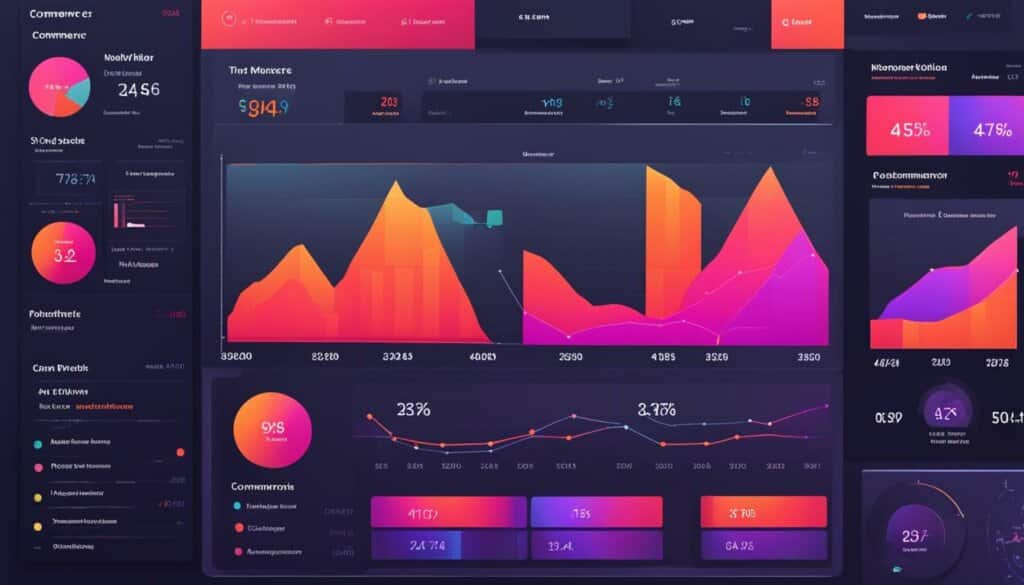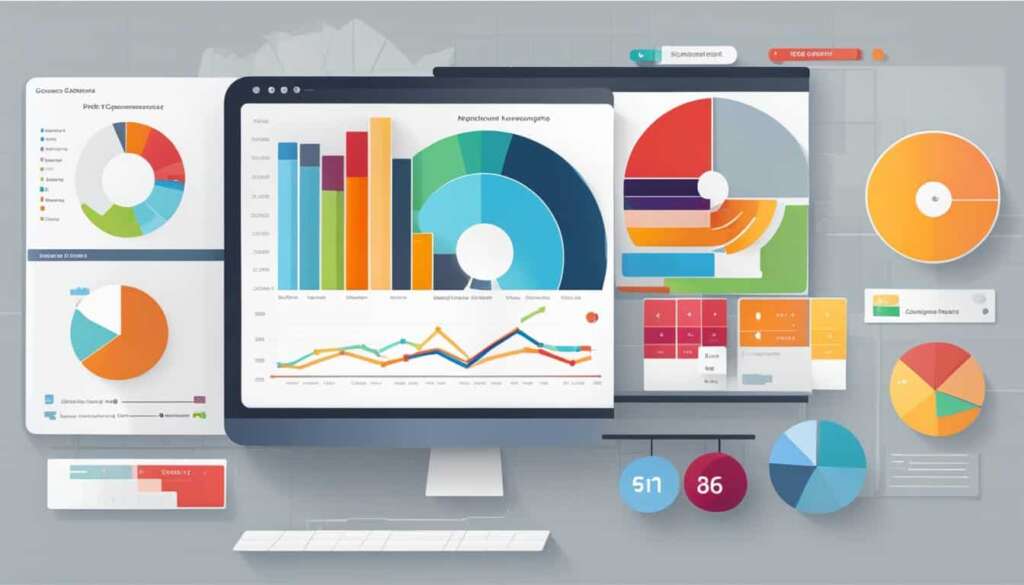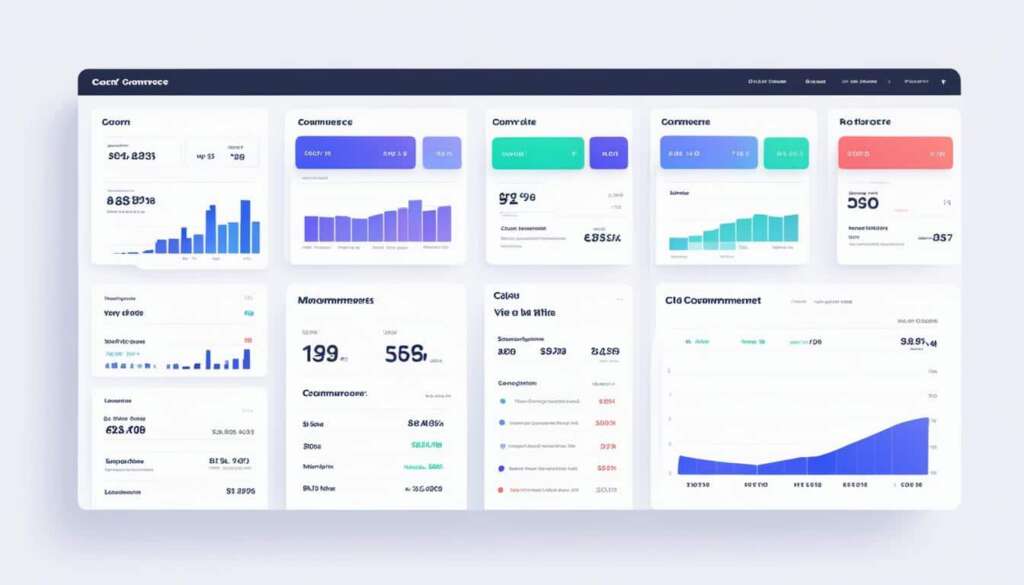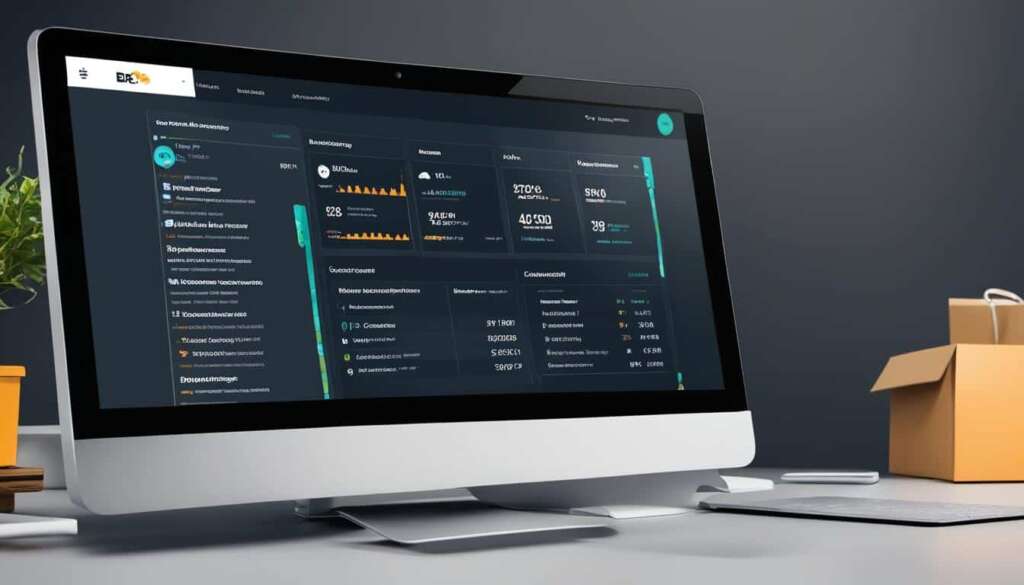Table of Contents
Are you looking to enhance your online sales and make data-driven decisions for your e-commerce business? Look no further than e-commerce analytics. Understanding the importance of e-commerce analytics can significantly impact the success of your online store. By analyzing data related to customer behavior, online shopping trends, and various metrics, you can optimize your strategies and drive higher sales.
With e-commerce analytics, you can track audience demographics, acquisition channels, website behavior, conversions, and paid marketing activities. By utilizing these valuable insights, you can make informed decisions that will help you improve your business performance and ultimately increase your online sales.
So, what are you waiting for? Let’s dive into the world of e-commerce analytics and unleash its potential to grow your online store’s sales and success.
Types of E-commerce Analytics
In order to develop an effective marketing strategy and gain a competitive edge in the online marketplace, it is essential to leverage various types of e-commerce analytics. These analytics provide valuable insights that can enhance your understanding of customer behavior, optimize your marketing efforts, and improve your overall business performance.
Audience Analytics
One type of e-commerce analytics is audience analytics, which offers insights into the demographics and devices used by your target audience. By understanding your audience’s characteristics, preferences, and browsing habits, you can tailor your marketing campaigns to effectively reach and engage your potential customers. This data helps you segment your audience, create personalized experiences, and optimize your marketing messages to drive conversions.
Acquisition Analytics
Acquisition analytics involves analyzing how customers find your website and which marketing channels are most effective in driving traffic and generating sales. It provides valuable information about the sources of your website visitors, such as organic search, paid advertising, social media, or referrals. By understanding which channels deliver the highest return on investment (ROI) and customer acquisition, you can allocate your marketing budget more effectively and optimize your efforts accordingly.
Behavior Analytics
Behavior analytics helps you gain insights into how visitors interact with your website and which products or pages generate the highest interest. It tracks user behavior, such as page views, clicks, time spent on-site, and the path they take throughout their visit. Understanding user behavior allows you to identify areas of improvement, optimize your website navigation, and create a seamless user experience that encourages visitors to convert into paying customers.
Conversion Analytics
Conversion analytics focuses on tracking the user journey from initial visit to conversion. It helps you understand the factors that influence conversion rates, such as product pages visited, add-to-cart actions, and checkout abandonment. By analyzing conversion data, you can identify bottlenecks in the conversion process and implement strategies to improve your overall conversion rate and revenue.
Paid Marketing Analytics
Paid marketing analytics provides insights into the effectiveness of your paid marketing campaigns, such as Google Ads or social media advertising. It allows you to measure the ROI of your campaigns, track key performance indicators (KPIs) like click-through rates, cost per click, and conversion rates, and optimize your ad spend to maximize your return on investment.
By utilizing these different types of e-commerce analytics, you can gain a comprehensive understanding of your target audience, refine your marketing strategies, and effectively compete in the online marketplace.
Why E-commerce Analytics Matters for Your Store
E-commerce analytics plays a crucial role in driving the success of your online store. By utilizing data-driven insights, you can make informed decisions that positively impact your business performance and boost your sales. Here’s why e-commerce analytics should be a top priority for your store:
1. Making Informed Decisions
E-commerce analytics provides you with valuable data and insights that enable you to make informed decisions. By analyzing metrics such as customer behavior, conversions, and acquisition channels, you can identify trends and patterns that help you optimize your marketing and sales strategies. Armed with this knowledge, you can make data-driven decisions that maximize your store’s potential and drive better results.
2. Improving Business Performance
By regularly monitoring and evaluating e-commerce analytics, you can gain a deep understanding of your store’s performance. This data empowers you to identify areas for improvement, such as optimizing pricing strategies or streamlining inventory management. By implementing targeted improvements based on analytics, you can enhance your store’s overall business performance and unlock new growth opportunities.
3. Increasing Sales and Revenue
E-commerce analytics provides insights into customer behavior and preferences, allowing you to tailor your offerings and experiences to their needs. By personalizing your marketing messages, product recommendations, and website experiences, you can enhance customer engagement and drive more conversions. This customer-centric approach ultimately leads to increased sales and revenue for your online store.
“E-commerce analytics allows you to understand your customers better, identify areas for improvement, and make data-driven decisions to elevate your online store’s performance.”
4. Achieving a Higher ROI
With e-commerce analytics, you can measure the effectiveness of your marketing and sales campaigns. By understanding which channels or promotions are driving the most sales, you can allocate your resources more effectively, resulting in a higher return on investment (ROI). E-commerce analytics empowers you to optimize your marketing spend, identify cost-saving opportunities, and allocate your budget strategically.
5. Gaining a Competitive Edge
In today’s competitive e-commerce landscape, having access to data-driven insights is essential for staying ahead of the competition. E-commerce analytics allows you to benchmark your performance against industry standards and identify areas where you can outperform your competitors. By leveraging this knowledge, you can develop unique strategies and tactics that set your online store apart and attract more customers.
Overall, e-commerce analytics is a critical tool for driving the success of your online store. By making informed decisions, improving business performance, increasing sales and revenue, achieving a higher ROI, and gaining a competitive edge, you can unlock the full potential of your e-commerce business.
How to Use E-commerce Analytics to Grow Sales
When it comes to driving sales in the competitive e-commerce landscape, utilizing e-commerce analytics is essential. By harnessing the power of data-driven decisions and understanding user behavior, you can implement effective growth strategies for your online store.
Start by tracking key metrics that provide valuable insights into your audience and their engagement with your website. These metrics include:
- Total traffic
- New and returning users
- Traffic sources
- Device breakdown
- Time on site
- Bounce rate
- Conversion rate
Tracking these metrics will enable you to better understand your audience’s journey and optimize your marketing strategies accordingly. By analyzing the data, you can identify trends, make informed decisions, and implement effective growth strategies.
“Data is the new oil.”
Understanding user behavior is crucial in maximizing your online sales. Analyzing data on user interactions, such as the specific products they engage with, can help you optimize your website and improve the user experience. For example, if you notice a high bounce rate on a certain product page, you can investigate further and make necessary changes to increase conversion rates.
Implementing Personalization
One of the most effective strategies for leveraging e-commerce analytics is personalizing the customer experience. By utilizing data on user behavior, preferences, and purchase history, you can create personalized marketing campaigns and product recommendations. This targeted approach improves customer satisfaction, increases engagement, and ultimately drives more sales.
“Personalization is not a trend; it’s a marketing imperative.”
Additionally, e-commerce analytics allows you to identify cross-selling and upselling opportunities based on customer preferences. By analyzing data on customer purchases, you can strategically recommend complementary products or upgrades, leading to increased average order values and higher sales volumes.
Take advantage of your e-commerce analytics to gain valuable insights and make data-driven decisions that fuel your growth. Embrace the power of user behavior analysis, optimize your marketing strategies, and implement personalized experiences to boost your online sales.
Remember: The key to success lies in understanding your customers and tailoring your approach accordingly.
References:
“Data is the new oil.”
“Personalization is not a trend; it’s a marketing imperative.”
| Metric | Description |
|---|---|
| Total Traffic | The overall number of visitors to your website |
| New and Returning Users | The number of unique visitors and those who have visited before |
| Traffic Sources | The channels through which visitors are reaching your website (e.g., search engines, social media, direct) |
| Device Breakdown | The distribution of visitors by device type (e.g., desktop, mobile, tablet) |
| Time on Site | The average duration of time visitors spend on your website |
| Bounce Rate | The percentage of visitors who leave your website after viewing only one page |
| Conversion Rate | The percentage of visitors who complete a desired action, such as making a purchase or signing up for a newsletter |

Best Practices for E-commerce Analytics
When it comes to e-commerce analytics, implementing best practices is essential for harnessing its full potential. By following these guidelines, you can ensure effective data analysis and optimization to drive the growth of your online store.
1. Choose the Right Tools and Platforms
To collect and analyze data effectively, it is crucial to select the right tools and platforms. Popular options include Google Analytics and Hotjar, which offer comprehensive insights into various aspects of your e-commerce operations. These tools provide valuable data on user behavior, website traffic, and conversion rates, enabling you to make informed decisions.
2. Set Clear Goals and Define KPIs
Establishing clear goals and defining key performance indicators (KPIs) is essential for measuring your e-commerce analytics success. These goals can be specific to your online store, such as increasing conversion rates, improving customer retention, or optimizing marketing campaigns. By setting measurable objectives, you can track your progress and identify areas for improvement.
3. Regularly Analyze and Review Data
Data analysis is at the heart of effective e-commerce analytics. Regularly reviewing and analyzing your data allows you to identify trends and patterns that can guide your optimization efforts. By understanding your customers’ preferences, behaviors, and purchase patterns, you can tailor your strategies to deliver personalized experiences and maximize conversions.
4. Test Different Strategies and Tactics
Experimentation is key to unlocking the full potential of e-commerce analytics. Test different strategies and tactics to determine what works best for your audience. This can involve A/B testing different website layouts, optimizing pricing and product placement, or refining your marketing campaigns. By continuously testing and iterating, you can refine your approach and uncover valuable insights.
5. Use Insights for Continuous Improvement
The true power of e-commerce analytics lies in its ability to drive continuous improvement. Use the insights gained from your data analysis to optimize your online store for maximum sales growth. Incorporate customer feedback, analyze user behavior, and adapt your strategies accordingly. By embracing a data-driven approach, you can stay ahead of the competition and keep refining your business for long-term success.
Conclusion
E-commerce analytics is a powerful tool that can significantly enhance the performance of your online store. By harnessing the data-driven insights obtained from analyzing audience demographics, acquisition channels, user behavior, conversions, and paid marketing activities, you can make informed decisions that drive success and boost your online sales.
Through e-commerce analytics, you gain a deeper understanding of your customers, enabling you to tailor your marketing strategies to their preferences and needs. By optimizing your marketing efforts based on valuable data, you can maximize your outreach and increase your online store’s visibility, ultimately driving more traffic and conversions.
Furthermore, e-commerce analytics empowers you to personalize the online shopping experience for your customers. By understanding their behaviors and preferences, you can create personalized offers, recommendations, and user experiences, enhancing customer satisfaction and loyalty.
By embracing e-commerce analytics, you can continuously improve your online store’s performance. Through data-driven decision making, you can identify areas for optimization, track the effectiveness of your strategies, and implement changes that result in higher conversion rates and improved business performance. Leverage the power of e-commerce analytics to stay ahead in the competitive e-commerce landscape and achieve long-term success.
FAQ
What is e-commerce analytics?
E-commerce analytics is the process of accumulating and analyzing data from various areas that impact your online store. It helps you understand customer behavior, track online shopping trends, and make data-driven decisions for your business.
Why is e-commerce analytics important?
E-commerce analytics is crucial for making informed decisions that drive the best results for your online store. By measuring the effectiveness of your marketing and sales campaigns, evaluating trends and patterns in data, optimizing pricing and inventory performance, and using customer data to personalize experiences, you can improve your business performance, increase sales, and achieve a higher ROI.
What types of e-commerce analytics are there?
There are several types of e-commerce analytics that can inform your marketing strategy and give you a competitive edge. These include audience analytics, acquisition analytics, behavior analytics, conversion analytics, and paid marketing analytics.
How can I use e-commerce analytics to grow sales?
To leverage the power of e-commerce analytics and grow your sales, you need to understand what it is and how to use it. Start by tracking important metrics such as total traffic, new and returning users, traffic sources, device breakdown, time on site, bounce rate, and conversion rate. Use this data to optimize your marketing strategies, improve user experience, personalize customer experiences, and make informed decisions based on user behavior and trends.
What are some best practices for e-commerce analytics?
When it comes to e-commerce analytics, there are some best practices to follow. First, ensure you have the right tools and platforms in place to collect and analyze data effectively, such as Google Analytics or Hotjar. Set clear goals and define key performance indicators (KPIs) to measure success. Regularly analyze and review your data, looking for trends and patterns that can guide your optimization efforts. Test different strategies and tactics to see what works best for your audience. Finally, use the insights gained from e-commerce analytics to make continuous improvements and optimize your online store for maximum sales growth.













